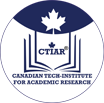What is Open Access
Open Access (OA) is free, instant, permanent online access to the full text of research articles for anybody, web-wide.
There are two roads to OA:
The “golden path” of OA journal publishing, where journals provide OA to their articles (either by crediting the author-institution for refereeing/editing outgoing articles alternatively of charging the user-institution for reaching incoming materials or by just making their online format free for all);
The “green path” of OA self-archiving, where authors implement OA to their published articles, by making their e-prints free for all. The two roads to OA should not be mixed or conflated; they are interconnected. (This site is concentrated largely on the green road because it is the fastest and surest way to reach immediate 100% OA, but the green road might ultimately lead to gold too). OA self-archiving is not self-publishing; nor is it about online publishing outwardly quality control (peer review); nor is it intended for writings for which the author wishes to be paid, such as books, monograph magazine/newspaper articles. OA self-archiving is for peer-reviewed research, written singly for research impact rather than royalty revenue.
Who profits from Open Access
Community as a whole benefit from an expanded and accelerated research cycle in which research can advance more dramatically because researchers have instant access to all the findings they need. The perceptibility, usage and influence of investigators’ findings progress with OA, as does their capability to find access and use the conclusions of others. Universities co-benefit from their scientists’ increased impact, which also improves the return on the expenditure of the funders of the research, such as governments, philanthropic foundations, and the tax-paying citizens.
For teachers, Open Access means no restrictions on providing articles for teaching purposes. Only the URL need be provided; Open Access takes care of the rest. Publishers likewise also benefit from the wider dissemination, greater visibility and higher journal citation impact factor of their articles.
Putting Open Access into Practice
– Researchers, their institutions, and their funders needed to be informed of the benefits of implementing Open Access and guided on how quickly and only it is done.
– Institutional Open Access Repositories need to be created (and registered in ROAR, so as to be observed and imitated by other institutions).
– Most significant, an OA self-archiving order for regularly filling these repositories with their target content needs to be approved and implemented (and registered, so as to be recognized and imitated by other institutions).
– An Institutional Repository is the best method to provide OA to research output. Software such as EPrints provides a web-based OAI-compliant IR for free.
Other Research Resource
– Enabling Open Scholarship (EOS).
– OA policy-making guidance for universities and research institutions worldwide.
– Open Access Scholarly Information Sourcebook (OASIS).
– Training and resources for people or institutions who wish to implement open access to their research publications.
– SPARC Campus Open Access Policies
– Devices to support data-driven, community-engaging, and successful open-access policy/design development at institutions wherever.



